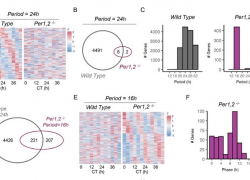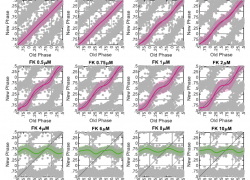Circadian rhythmicity is a fundamental property present in almost all light-sensitive organisms, from cyanobacteria, through plants, flies to humans. As earth completes each rotation every 24 hours, such an endogenous clock assists organisms to predict and adapt to daily environmental changes. These diurnal rhythms in physiology and behavior have been studied for centuries, but only recently a tremendous leap has been made in our understanding of these key processes.
The mammalian circadian timing system consists of a central pacemaker in the brain that synchronizes subsidiary oscillators in virtually all cells of the body. All these oscillators were found to share a similar molecular makeup, and are maintained through interconnected transcriptional-translational feedback loops of core clock genes. While the brain’s master clock is entrained by daily light-dark cycles, feeding time appears to be the dominant timing cue for peripheral clocks.
Compelling evidence points toward a tight intertwining between circadian rhythms and metabolism. Circadian clocks play a major role in orchestrating daily metabolism and their disruption can lead to metabolic diseases such as diabetes and obesity. Concomitantly, clocks are tightly coupled to cellular metabolism and respond to feeding cycles. Our overarching goal is to uncover molecular mechanism within the core clock circuitry in respect to cellular metabolism and identify metabolic cycles in mammals












